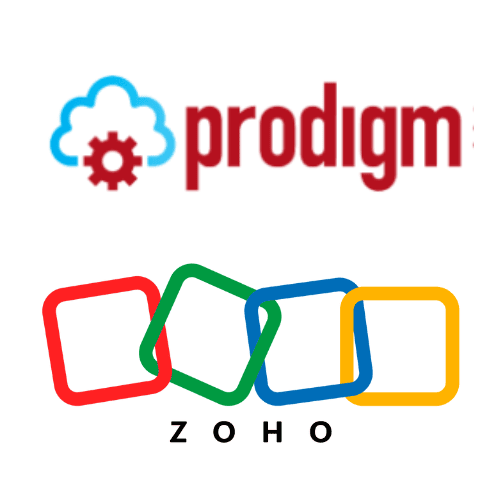
You wouldn’t build a house without an architect. You wouldn’t launch a major construction project without blueprints, permits, and structural design. Yet too often, businesses build digital systems as though they were playing LEGO—adding tools, apps, integrations, and automations ad hoc, hoping it “just works.”
That’s exactly the problem Prodigm addresses. As certified DMAP consultants and seasoned Zoho systems architects, we believe the design phase is the make-or-break moment for any transformation. Here’s why every SME should engage a system architect before deploying their tech stack.
The Blueprint Matters: What Is System Architecture?
System architecture is the blueprint of how all your software, data, workflows, and integrations will fit together.
Just as an architect ensures plumbing, structural loads, electrical systems, and aesthetics align in a building, a systems architect ensures your CRM, ERP, marketing tools, analytics, and internal apps work cohesively.
Without it, you end up with “leaky pipes,” conflicting systems, duplicate data, bottlenecks, and expensive refactoring.
The High Cost of Skipping Design
- Explosion of point tools & silosYou adopt a tool for sales, then another for HR, then another for supply chain, without considering how they’ll communicate. Over time, you’ll drown in manual data transfers, inconsistent views, and friction between departments.
- Technical debt you can’t seeEvery quick hack, unplanned integration, or workaround builds hidden debt. Eventually, clashing dependencies and “fragile” systems bring your operations to a halt.
- Poor ROI on softwareYou pay for licenses, customizations, and training, but because nobody took the time to align tech with business logic, much of that investment never delivers value.
- Vendor confusion and miscommunicationWithout a clear design or spec, developers or consultants spend weeks just trying to understand your needs. Many “deliverables” turn into rework loops.
What a Systems Architect Does (Before Writing a Single Line of Code)
Phase | Activities | Outcome / Deliverable |
Discovery & Visioning | Interview stakeholders, map goals, pain points, KPIs | A shared vision, success metrics, and strategic priorities |
Process Mapping | Map departmental workflows end-to-end | Visual maps that highlight inefficiencies, handoffs, and dependencies |
Data Modeling & Integration Planning | Define core entities, data relationships, integration touchpoints | A data scheme and integration roadmap |
Modular System Design | Decide which apps to use (Zoho apps, third-party, custom modules), define custom modules, workflows, permissions | A system blueprint, module diagram, integration matrix |
Phased Implementation Plan | Prioritize building blocks, define minimal viable modules, training & change strategy | A phased roadmap (e.g. Phase 1: CRM + Sales Automation, Phase 2: Inventory + ERP, etc.) |
Governance & Scalability Rules | Access control policies, naming conventions, extensibility guardrails, monitoring strategy | A governance framework to prevent chaos in years ahead |
This is exactly the type of work we deliver through Prodigm’s systems architecture process, whether as part of DMAP-funded design or stand-alone engagements.
How Zoho Fits Into This Architecture Vision
Because Prodigm has deep Zoho expertise (200+ projects completed) prodigm.ca, leveraging Zoho as your backbone often becomes the “default but wise” choice. Here’s why:
Unified ecosystem — Zoho One links apps like CRM, Books, Creator, Analytics, Flow, Cliq, People, Projects, and more. You avoid integration fragility.
Modular & extensible — You can begin with what you need and expand later, building custom modules in Zoho Creator or low-code tools.
Cost efficiency — Rather than paying for multiple separate niche tools that don’t talk well, you get wide coverage under one roof.
Data consistency & visibility — All modules can share core entities (e.g. Customers, Products, Orders), so reporting, dashboards, and decision-making are simplified.
Easier change management — As changes occur (new departments, new processes, new KPIs), your architected design provides guardrails for safe expansion.
Real-World Impact: What Clients Experience After Design-First
- Faster developer onboardingOne of our clients said every developer they spoke with “commented on the detail and precision” of the DMAP plan, making subsequent build phases far more efficient.
- Reduced wasteEliminating redundant tools, consolidating licenses, and avoiding unnecessary integrations led to measurable cost reduction and less maintenance overhead.
- Fewer surprisesIn projects without plans, mid-build change requests blow past budgets. With a good system design, surprises become rare, and stakeholders stay aligned.
- Profit & productivity gainsWhen workflows align, data flows, and automation fills the gaps, teams can spend less time firefighting and more time growing the business.
Summary
If you’re thinking about digital transformation, automation, or implementing Zoho (or systems surrounding it), pause. Engage a system architect first.
At Prodigm, that’s not an optional add-on — it’s our specialty. Whether you’re applying for DMAP funding or not, our design-first approach ensures your technology isn’t just a jumble of tools, but rather a coherent, scalable, profitable engine.
👉 Ready to build something that lasts? Let’s sketch your system architecture together. Book a consultation with Prodigm today.
